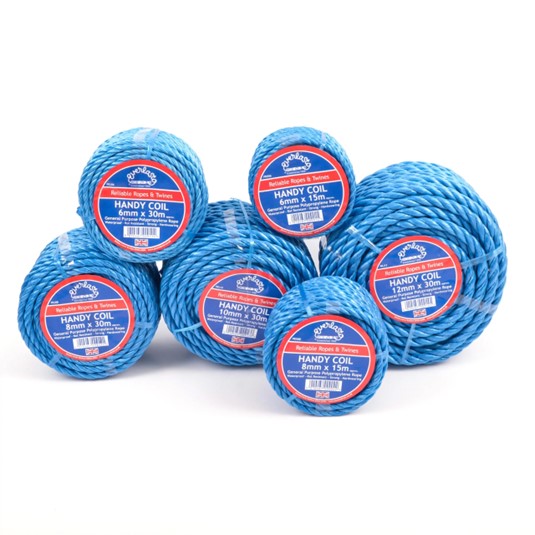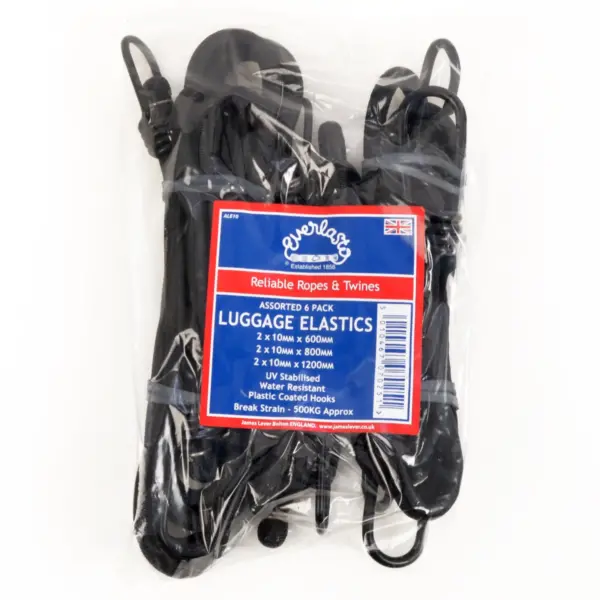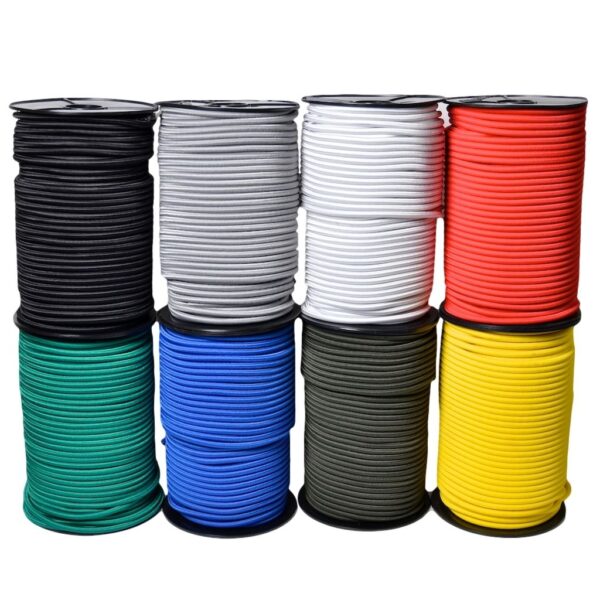Are you an avid gamer or tend to work on a PC or laptop for long periods of time? Then you may be familiar with the annoyance of your mouse cable dragging on your desk – especially if you use a wired mouse.
We get it. The issue of mouse cable drag might seem trivial, but over time, it can grate on you! Whilst commercially available mouse bungees are a great solution, they can come with a high price tag. Instead, we’ll show you how to craft your own mouse bungee at home that’ll last for years to come. It’s one of many creative uses for bungee cords we recommend to keep your space tidy and hassle-free.
But don’t worry – we’ll walk you through this step-by-step guide to creating a DIY mouse bungee, using materials that are readily available at home, combined with our durable bungee cord. Soon, you’ll be able to game and work without tangled-up cables.
Is a DIY mouse bungee good for gaming?
Bungee cords can be used to make your gaming and PC life so much easier. That’s because a DIY mouse bungee can manage your mouse cord and lessen the chances of any tangles and offering a more fluid, pinpoint-accurate movement of your mouse. Even if you’re not gaming, bungee cords are great for the office, particularly if your mouse cable is just a bit too long.
Plus, by substantially reducing the drag and interference often caused by loose or tangled cables, a mouse bungee could potentially enhance your overall gaming performance too! So, if you’re looking to gain a competitive edge or simply want a more streamlined gaming session, a DIY mouse bungee is absolutely worth creating.
What size bungee cord should I use for a DIY mouse bungee?
The bungee cord size we recommend can be down to personal preference. However, with mouse cables being relatively small in diameter, we recommend getting bungee cords on the smaller side too.
What tools will I need to create a DIY mouse bungee?
We recommend having the following tools handy to ensure your mouse bungee DIY-ing is as easy as possible:
- Drill
- Screwdriver
- Scissors or wire cutters
- Measuring tape (or ruler)
- Pencil or permanent marker for marking
9 ways to make a DIY mouse bungee
Before you get started, it’s worth reading out best knots for bungee cords guide. This is so you know how to optimally tie your bungee cord so that it doesn’t unravel or get in the way whilst gaming or using your PC for work.
H3 – 1. Wooden block or metal place mouse bungee
Materials required
Start by preparing a heavy base – either a wood block or metal plate works well. Drill a hole at a marked spot on the base and securely screw in one of our bungee hooks (we recommend our 6mm Spiral Bungee Hooks) or eyelet. Once that’s set up, cut your bungee cord to the length you think you’ll need, but we recommend leaving a bit extra for adjustments and error correction. Knot one end of the bungee cord and loop it through the hook on the base, pulling tightly to secure it.
Next, align your mouse cable with the bungee cord. Use rubber bands, zip ties, or cable clips to keep the two cords together, but be sure you leave enough slack near the mouse so you can still move it about without it pulling. After routing the mouse cable, test the setup by moving your mouse in various directions. Is the mouse cable still pulling? Adjust the bungee cord’s length and tension as needed to ensure it lifts the mouse cable off the desk but doesn’t restrict movement. Once you’re happy, use some more adhesive (or zip ties) to keep everything in place.
2. PVC pipe mouse bungee
Materials required
- PVC pipe (2 feet, 1-inch diameter)
- Rubber bands
- Suction cup with hook
- Foam base
- Cable ties
- Double-sided tape
Crafting a mouse bungee with PVC pipe is a reliable way to handle mouse cable management effectively.
Cut a PVC pipe with a 1-inch diameter into two segments: one at 12 inches and another at 6. Use a rubber band to fasten them together in a perpendicular way to create the main framework of your bungee mouse cord. Think you need extra stability? Attach a foam pad to the bottom end of the 12-inch PVC piece with some double-sided adhesive tape or hot glue.
To fix your mouse cable in place, wrap rubber bands around the 6-inch PVC arm to create enough tension to hold the cable, or use cable ties for a more permanent fixture. Test it out by moving your mouse in various directions. Make sure the cable stays lifted off the desk and allows for fluid movement. If you need to, tweak the tension and positioning so that’s comfortable for use – then you’re done!
3. Binder clip mouse bungee
Materials required
- Large binder clip
- Rubber band
- Suction cup
Steps
Making a binder clip mouse bungee is a really easy way to tackle mouse cable issues that get in your way. Get a large binder clip and clip it to the side of your desk, closest to your mouse. Then, take a rubber band and thread it through the metal handles of the clip, which will effectively create a makeshift harness for the mouse cable. Run the cable through the rubber band harness, but make sure there’s just enough slack for free mouse movement.
4. LEGO tower mouse bungee
Materials required
- LEGO bricks
- Small spring
- Rubber band
Steps
Thought you’d never play with LEGO again? Now’s your chance to dig some out! Collect a variety of LEGO pieces and assemble a stable, vertical tower around 6-12 inches – just ensure the base is large so that it can stand securely on your desk and not get easily knocked over. Next, attach a smaller, horizontal piece near the top of the tower, as this will act as the arm that holds your mouse cable.
To hold the cable in place, either craft tiny LEGO ‘grippers’ or use our plastic easy fix hooks, attach them to the horizontal arm and thread your mouse cable through. Leave enough slack near the mouse for ease of motion, but if needed, wrap a rubber band around the LEGO arm and the cable for additional tension and support.
5. Metal hanger mouse bungee
Materials
- Wire coat hanger
- Pliers
- Rubber bands
- Foam base
- Double-sided tape
Steps
Pick out a metal coat hanger and bend it so that one end forms a base that can rest on your desk, while the other end arcs upward to act as the bungee arm. You can stabilise the base by wrapping it in rubber bands or attaching it to a small piece of wood or cardboard from a cardboard box.
Attach a rubber band or a small piece of Velcro at the tip with double-sided tape to the upward-arching arm, then run your mouse cable through the loop, ensuring there’s enough slack near the mouse for free movement. Be sure to test it by moving your mouse around and adjusting any tension as needed with more (or less) rubber bands.
6. Easy paper clip mouse bungee
Materials
- Large paper clips
- Rubber band
- Tape
Steps
Paper clip mouse bungees are one of the quickest ways to sort out annoying mouse cords when you don’t have much equipment at your disposal. Get the biggest paper clips you can (around 4-5 should do) then unwind them to make straight wires. You can twist them together to make one thicker wire which will act as your bungee arm. If you can get ahold of jumbo paper clips, then this will work even better!
Got a coaster or hefty notepad lying about? Poke the twisted paper clip wire into the base and secure it with some hot glue, or blue tack. Next, use a rubber band or a small zip tie and attach it to the top of your paper clip arm. Slide your mouse cable through it, leaving enough slack for smooth mouse movements but not too much that the mouse cable still drags across your desk.
7. Cardboard stand mouse bungee
Materials
- Cardboard
- Scissors
- Rubber bands
- Glue
Steps
If you want an eco-friendly solution then this DIY mouse bungee is definitely one to try. Get a piece of sturdy cardboard and cut out a base and a vertical stand. The base should be wide enough to remain stable on your desk, say around 6×6 inches. For the vertical stand, aim for about 12 inches in height and 3-4 inches in width.
Attach the vertical stand to the base with some hot glue or double-sided tape – whatever can get it secure enough to hold the tension of your mouse cable. Next, you’ll want to punch a hole near the top of the vertical stand, and thread a rubber band or zip tie through it. This will serve as the anchor point for your mouse cable. Slide your mouse cable through the rubber band or zip tie to the desired length so that there’s enough slack but also some tension. Adjust as needed for your comfort, and then you’re good to go!
8. Mouse bungee with a clothespin
Materials
- Clothespin
- Rubber bands
- Wooden block or coaster
Steps
Get some durable clothespins and a solid base, like a small block of wood or a few coasters taped together (unless you have a sturdy one to begin with). Stick one clothespin upright on the base using hot glue or double-sided tape, ensuring it’s stable enough to handle your mouse movements.
Next, attach another clothespin to the top of the first one, making sure it faces outward to hold your cable. Insert the cable between the prongs of the second clothespin, adjusting the slack so you have enough freedom for smooth mouse action, but not so much that the cable flops around on your desk.
9. Pen and rubber band mouse bungee
Materials
Steps
This DIY mouse bungee is suitable for those with little to no equipment. Start by securing an upright pen to a sturdy base like a small wooden block or a heavy book, anchoring it with tightly wound rubber bands at the bottom. For additional stability, consider drilling a hole in the wooden block to insert the pen, and reinforce it with hot glue or adhesive tape if needed.
To manage your mouse cable, just wrap a rubber band around the top of the pen to create a loop, and then thread your mouse cable through it. Adjust as needed depending on how much tension and slack you need.
And there you have it! We hope we’ve made the process of creating your own DIY mouse bungee a little easier with 9 creative ways to do so. With these unique ways to manage your cables, there’s something you can create for every crafting level. Read more about fun and practical bungee cord projects with The Bungee Store blog, and check out The Bungee Store shop for bungee cord supplies.

 US 550 Paracord Black
From: £6.09
US 550 Paracord Black
From: £6.09
 Polypropylene Cargo Rope 8mm
From: £2.27
Polypropylene Cargo Rope 8mm
From: £2.27
 Polypropylene Cargo Rope 10mm
From: £2.73
Polypropylene Cargo Rope 10mm
From: £2.73
 6 Pack - Assorted10mm Luggage Elastics
From: £4.47
6 Pack - Assorted10mm Luggage Elastics
From: £4.47
 Polypropylene Cargo Rope 6mm
From: £1.51
Polypropylene Cargo Rope 6mm
From: £1.51
 Polypropylene Cargo Rope 12mm
From: £3.18
Polypropylene Cargo Rope 12mm
From: £3.18
 Lastoflex Bungee Cord 8mm
From: £8.60
Lastoflex Bungee Cord 8mm
From: £8.60
 Lastoflex Bungee Cord 10mm
From: £9.55
Lastoflex Bungee Cord 10mm
From: £9.55
 Lastoflex 6mm Bungee Cord
From: £3.89
Lastoflex 6mm Bungee Cord
From: £3.89



